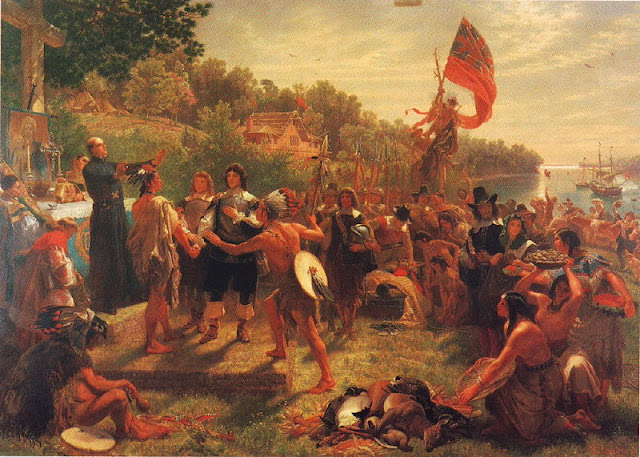April 28, 1788: Maryland becomes the seventh state after it ratifies the United States Constitution
Before European settlement, Maryland was home to the Iroquois
and Algonquin peoples. During the 16th century, Italian explorer
Giovanni de Verrazano explored the mouth of the Chesapeake Bay; and John Smith further
explored it in 1608. In 1632, George Calvert, 1st Baron Baltimore,
applied to King Charles I for a royal charter for the area surrounding Chesapeake
Bay. When Calvert died, his son, Cecilius Calvert, 2nd Baron Baltimore,
was granted the charter in his stead. The colony was named in honor of King Charles’s
wife, Queen Henrietta Maria. Upon its establishment, the colony of Maryland was
predominantly Catholic, due to the shared religion of the Queen and Calvert’s.
The new colonists landed at St. Clements’s Island on March 25, 1634. St. Mary’s
City was established as the colony’s capital, and would remain such until 1695.
In 1649, the colonial legislature passed the Maryland Tolerance Act, which fostered
the free exercise of religion throughout the colony. However, when the
Protestants William and Mary became King and Queen in 1695, the colonial charter
of the predominately Catholic colony was put into flux. Benedict Calvert, 4th
Baron Baltimore, grandson of Cecilius, decided to convert to Anglicanism in
order to retain the charter. He moved the colonial capital from St Mary’s to
Ann Arundel Town, present day Annapolis, in order to mark his conversion.
During of the American Revolution, Maryland saw little action. It joined the confederation
of states in 1777. When the Constitution was established in the Confederation’s
place, Maryland became the seventh state, when it ratified it on April 28, 1788.




Comments
Post a Comment